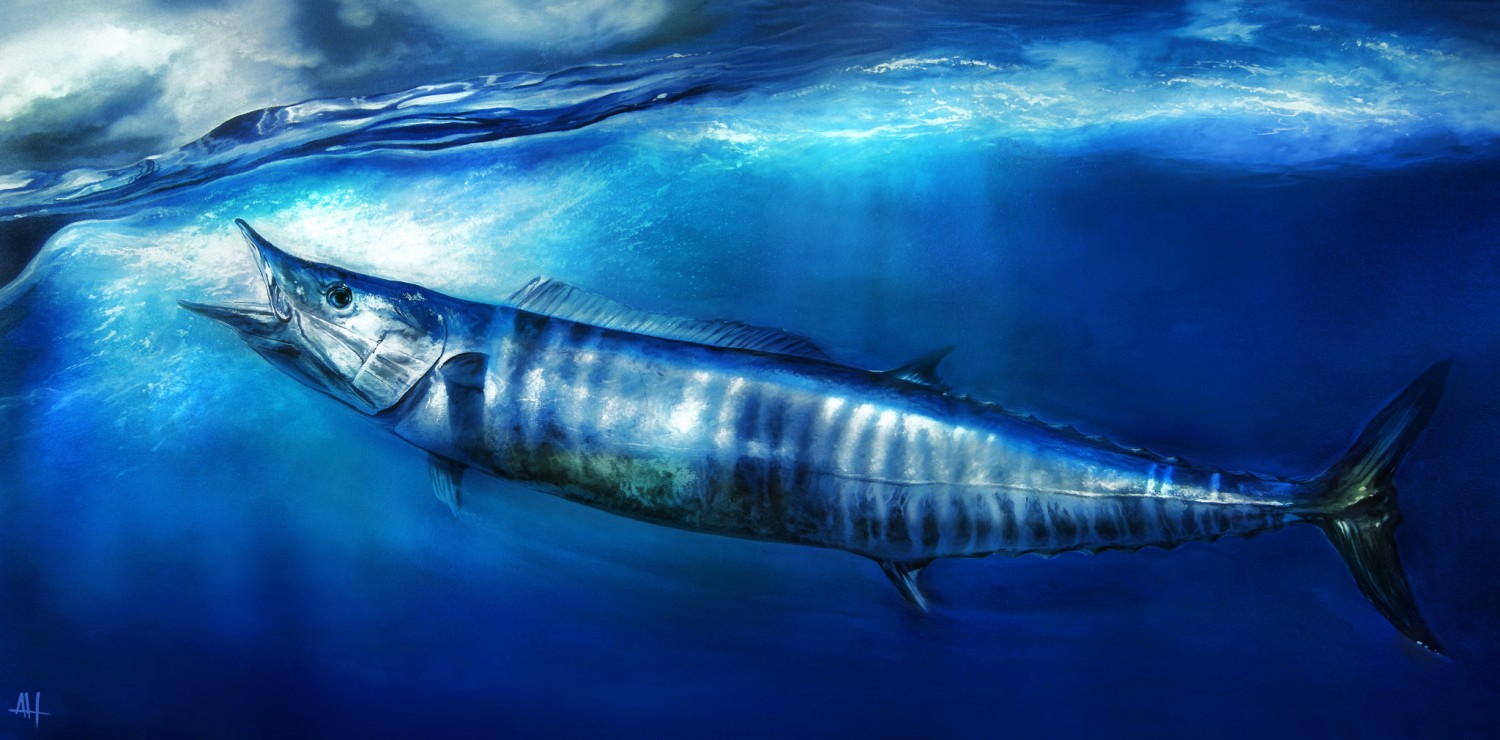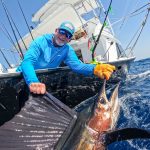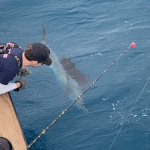Article Courtesy: anglersjournal.com | Originally Published: 7/21/2020 | Click here for original article
Perfect Predator
Rush hour on North Carolina’s Hatteras Island starts long before sunrise. Pickup trucks, minivans and station wagons snake down Highway 12 on their way to local marinas. In the parking lot of Hatteras Harbor, diesel fumes and excited voices fill the air as anglers climb out of their vehicles and pile into charter boats.
It’s early fall, and the ocean is cooling, driving every wahoo on the East Coast past Hatteras Island on their way to winter grounds. The migration attracts hard-core anglers looking for world-class action for one of the tastiest fish on the menu. But it’s the wahoo’s vicious personality that brings me back each season. I’m here to fish for the perfect predator.
Clocked at more than 60 mph, wahoo are one of the fastest fish in the sea. Torpedo-shaped and armed with sharp teeth, they like their meals on the go. The fish are as exciting to watch as they are to catch, capable of leaping high into the air and landing on a speeding lure with pinpoint accuracy.
I’m riding on the bridge of Release, a 50-foot sportfish, as Capt. Rom Whitaker guides the boat through shallow bars and breaking waves, into the open ocean. The wind is light, the seas calm. We pass the sea buoy, and my hopes rise with the low-hanging sun. Whitaker and I have fished together for decades, catching everything from giant bluefin to blue marlin, but each season I return to the island for my wahoo fix.
After an hour run, we arrive at the fishing grounds. Whitaker backs off the throttles until Release is trotting along at a rolling jog. In the cockpit, mate Andy Trant rigs heavy rods with SeaWitch skirts over large ballyhoo. To guard against the wahoo’s teeth, the lure is preceded by a long wire leader.
Sitting on the bridge, I watch the lures dart in and out of the wake. From the corner of my eye, I catch a blue flash right before a silver missile launches toward the sky, pauses midair and plunges back into the sea, perfectly spearing a speeding bait.
“Whoa!” The anglers in the cockpit cheer in unison as the reel screams and the rod bucks heavily.
Before I can gain my wits, another wahoo rockets out of the blue and attacks a lure a few feet from the boat. “Yeow! Did you see that?” I shout and turn to see Whitaker laughing and shaking his head.
With two reels dumping line, Whitaker slows the boat, and the anglers go to work. Trant orchestrates the fight, and I run into the cabin to grab my camera. The anglers work the fish, gaining and giving up line, groaning under the pull of a heavy adversary as their friends laugh and offer encouragement. Once the leader is within reach, Trant grabs the wire hand over hand, pulling like a game of tug-of-war.
When the fish makes a pass close to the boat, the mate swings his gaff and drags four feet of muscle, glowing blue and silver, over the gunwale and onto the deck. “Stay back!” he orders and goes to work subduing the fish with a short club.
Before he slides the wahoo into the fishbox, Trant explains why these fish are so dangerous. “Look at the teeth,” he says, pointing to rows of tiny, razor-sharp bumps. “The jaws close like scissors.” The unique dental work allows wahoo to slice through prey, then return to slurp up the pieces. It also makes them a catch to handle with care. “Wahoo are dangerous even after they’re dead,” he warns. Accidental contact with those teeth could land you in the hospital.
The anglers clear the deck, and Trant lands the second fish. Whitaker turns the boat, and the crew helps reset the baits. Before the last rod is out, another explosion of whitewater results in the pop of the outrigger clip and a zinging reel.
“Woo-hoo!” I shout, and the chorus is repeated in the cockpit. With everyone yelling and shouting with excitement, it’s easy to understand how wahoo got their name.






